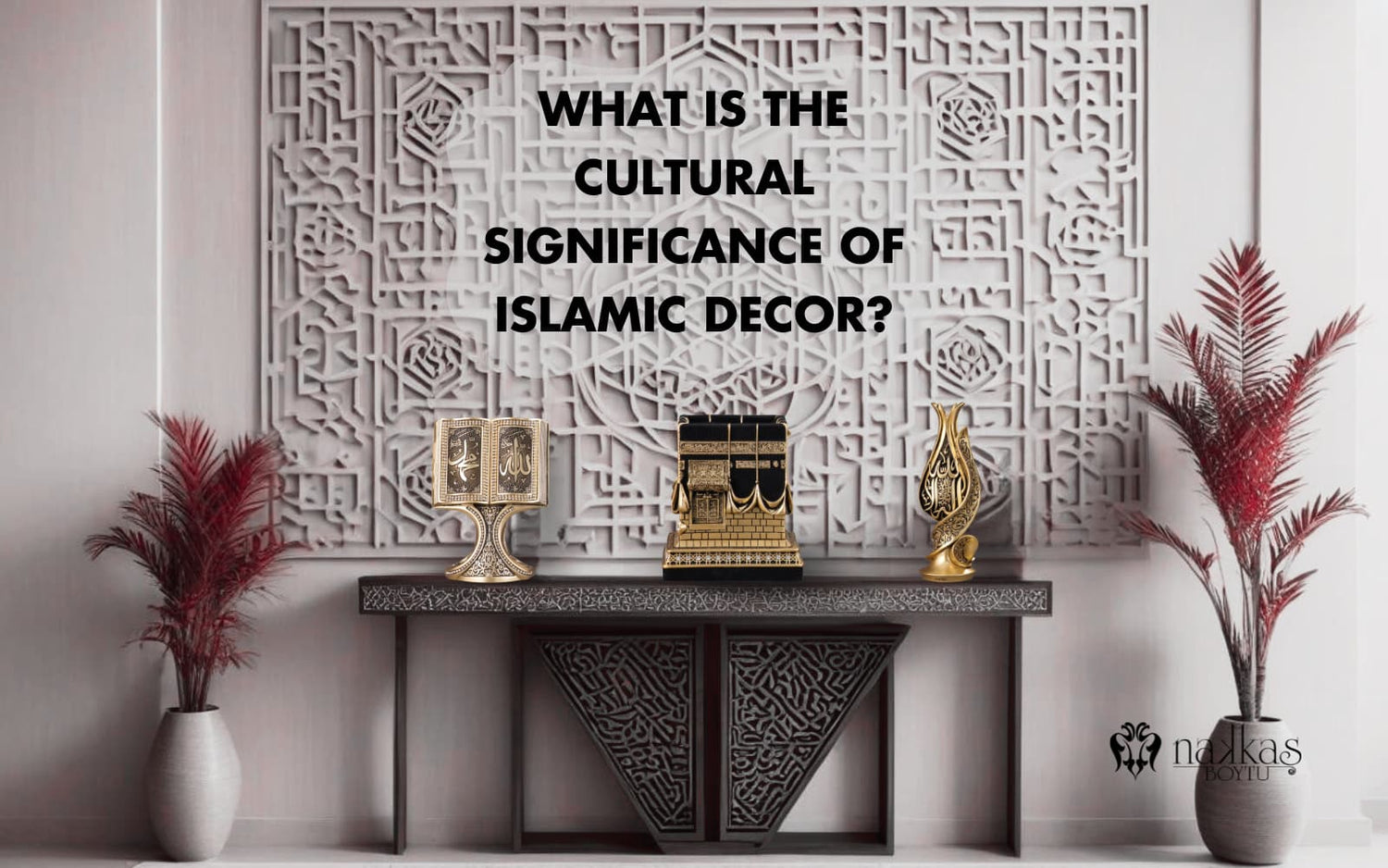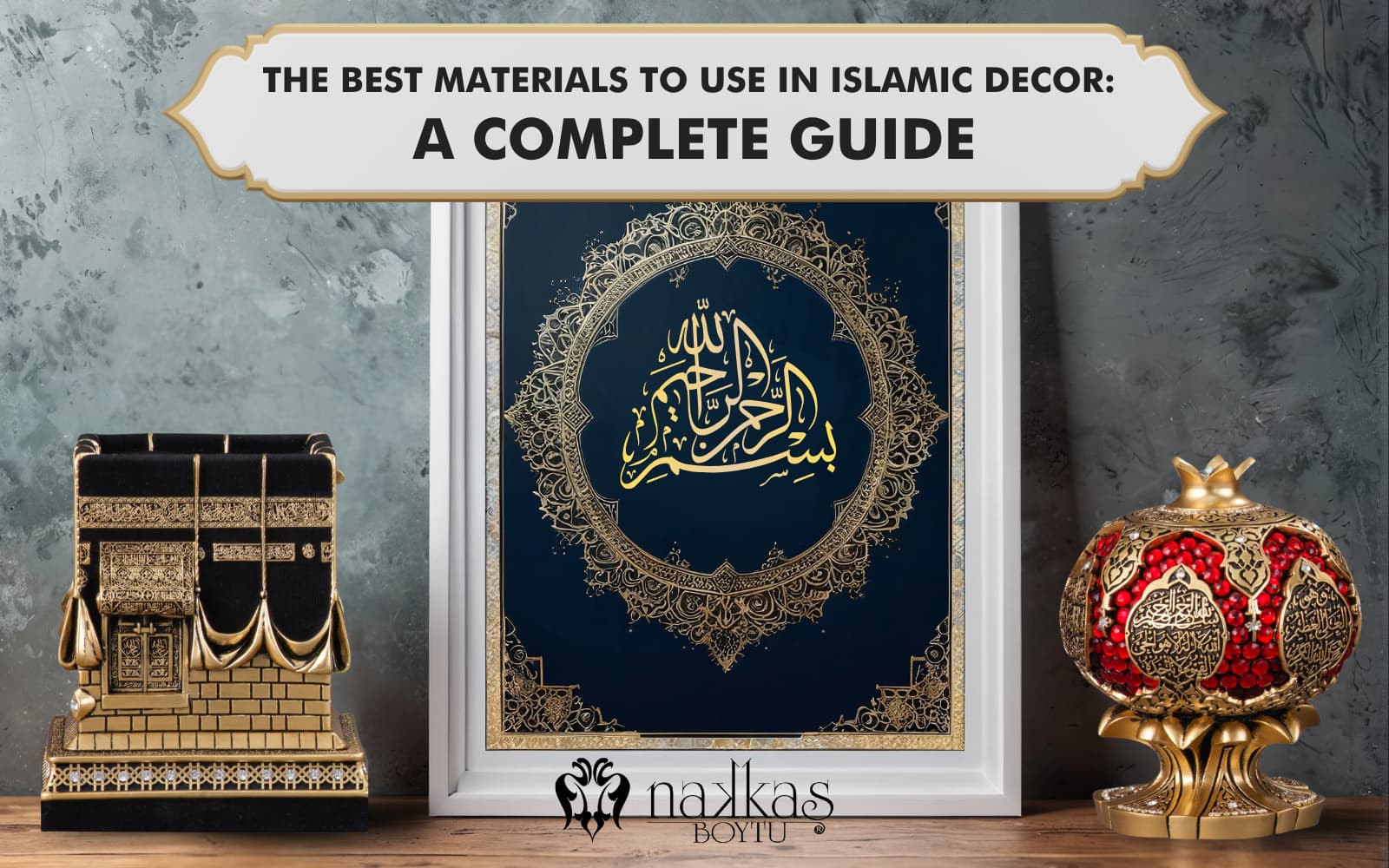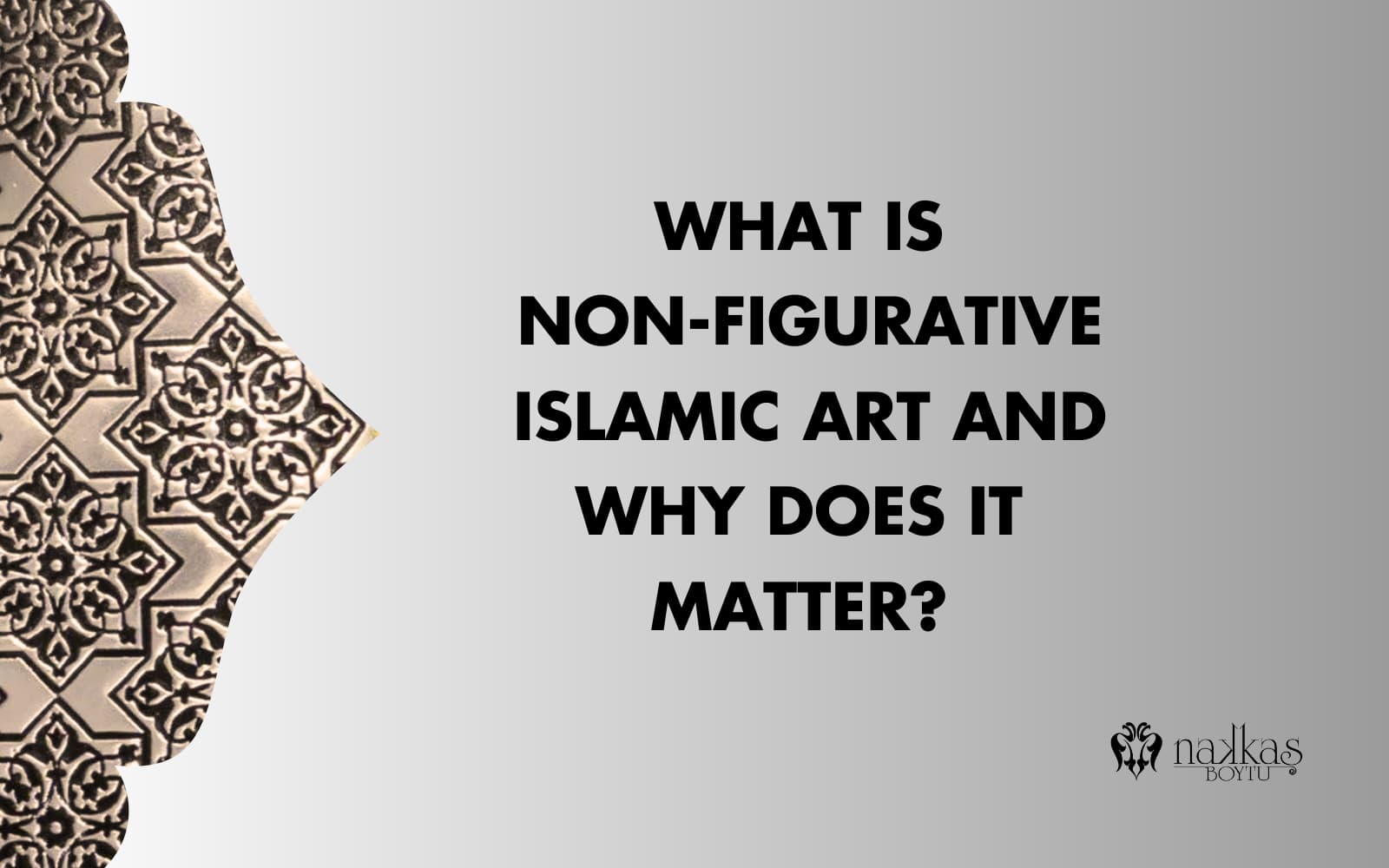Islamic home decor is more than just decoration—it is a reflection of faith, culture, and artistic expression. Thoughtfully designed Islamic decorations for the home can transform any space, creating an atmosphere of peace and inspiration. Each element carries deep meaning and historical significance, from intricate calligraphy to mesmerizing geometric patterns. Whether you prefer traditional craftsmanship or modern Islamic home decor, the right design choices can enrich your living space while preserving Islamic artistic heritage.
As Islamic interior design evolves, it blends timeless patterns with contemporary aesthetics, offering versatile decor solutions for modern homes. Whether it’s an engraved calligraphy plaque, an elegant lantern, or a prayer area setup, every piece is designed to inspire and connect individuals to their faith. This guide explores the cultural significance, materials, and latest trends in Islamic design, helping you choose the perfect decor elements to elevate your home.
How Has Islamic Decor Evolved Throughout History?
Islamic decor has transformed over centuries. It began in the 7th century with simple calligraphic inscriptions and geometric patterns. Early art avoided figurative imagery, focusing on calligraphy, arabesque motifs, and symmetrical designs in mosques, manuscripts, and ceramics.
During the Abbasid, Fatimid, and Andalusian periods (roughly the 8th-15th centuries), Islamic decor blossomed into even greater detail and complexity. Mosaics, like those found in the Great Mosque of Samarra (Abbasid period), carved wood panels showcasing intricate arabesques (Fatimid Egypt), and vibrant ceramic tiles, exemplified by the *azulejos* of Al-Andalus (Islamic Spain), became prominent. This era also witnessed architectural marvels like muqarnas (honeycomb vaulting), a breathtaking innovation seen in mosques and palaces, and elaborate tilework reaching its zenith, as famously displayed in the Alhambra Palace in Granada and the Great Mosque of Cordoba.
Later, the powerful Ottoman, Persian, and Seljuk empires (roughly 13th-20th centuries) each left their indelible mark on Islamic decor. The Ottoman era is renowned for its exquisite Iznik tiles, which are celebrated for their vibrant cobalt blue, turquoise, and red hues and floral designs (Topkapi Palace, Istanbul). Persian miniatures, with their rich colors and detailed narratives, influenced decorative arts. The Seljuks introduced intricate gemstone inlays and refined geometric patterns in woodwork and metalwork (Seljuk palaces and mosques in Konya, Turkey). Today, these historically rich elements are skillfully blended with modern styles. We see minimalist calligraphy art gracing contemporary walls, laser-cut designs adding a modern twist to traditional patterns, and digital art exploring Islamic motifs in entirely new dimensions, beautifully preserving the enduring essence of Islamic heritage in the 21st century.
Why is Islamic Decor More Than Just Aesthetic?
Islamic decor transcends mere visual appeal; it serves as a profound visual language deeply intertwined with faith, history, and the very essence of Islamic identity. Calligraphy, far from being just decorative script, often features powerful Quranic verses – timeless words of wisdom and guidance. These verses act as constant spiritual reminders, subtly woven into the fabric of daily life. Geometric and arabesque patterns are not simply pleasing designs; they are visual representations of divine order and the inherent harmony believed to permeate the universe, reflecting core tenets of Islamic cosmology.
Beyond decoration, it connects individuals to their cultural roots and shared traditions. Influences from different regions enrich its artistic expression, preserving Islamic heritage across generations. It fosters a sense of belonging and gives spaces purpose beyond aesthetics.
What Are the Symbolic Meanings Behind Common Islamic Patterns?
Islamic patterns and symbols hold deep religious and cultural meanings. The crescent and star, widely associated with Islam, symbolize unity, brotherhood, and the lunar calendar. The word “Allah” in calligraphy represents the essence of Islamic Tawheed. It reminds believers that Allah (SWT) is omnipresent, while the Shahadah affirms the belief in the one and only Allah (SWT) and the prophethood of Prophet Muhammad (SAW). The Rub El Hizb (eight-pointed star) signifies the Quranic structure. The Khatim (seal) represents Prophet Muhammad (SAW) as the final messenger, while the Kaaba in Mecca serves as the center of Muslim worship and pilgrimage. These symbols reinforce faith, tradition, and Islamic heritage.
For more information, you can see our blog article titled “Islamic Symbols in Decor”.
How Can Islamic Decor Enhance Modern Living Spaces?
Islamic decor creates serene and meaningful spaces by blending tradition with modern aesthetics. Calligraphy featuring Quranic verses or Allah’s name adds a spiritual touch, while geometric and arabesque patterns bring balance.
Minimalist wall art, neutral color schemes, and laser-cut designs integrate seamlessly into contemporary homes. Decorative lanterns, rugs, and engraved plaques add warmth, making spaces more inviting. Thoughtfully chosen Islamic decoration ideas transform interiors while maintaining cultural identity.

What Are the Most Popular Islamic Decor Items Today?
Islamic decor items combine faith, tradition, and modern design. Here are some of the most popular choices:
1. Calligraphy Art
Islamic calligraphy is one of the most sought-after decor elements. Quranic verses, prayers, and the Asmaul Husna (The 99 Names of Allah) are often displayed in wood engravings, metal wall art, and decorative items.
2. Geometric Patterned Accessories
Islamic decor heavily features geometric and arabesque patterns, symbolizing unity and divine order. These patterns appear in rugs, cushions, curtains, and table decor, offering a blend of traditional and modern designs.
3. Decorative Lanterns and Islamic Lamps
Islamic-style lanterns and lamps, often made from brass, glass, or wood, create a warm and inviting ambiance. Moroccan, Turkish, and Arabic lanterns with intricate patterns provide soft lighting, enhancing a space's elegant atmosphere.
4. Prayer Area Essentials
Many homes feature dedicated prayer spaces decorated with elegant prayer mats, Quran stands, and framed calligraphy. These elements help create a peaceful and inspiring environment for worship.
5. Islamic Clocks
Clocks featuring Islamic motifs and Arabic numerals are both functional and decorative. With engraved calligraphy or geometric patterns, they serve as elegant focal points in modern homes.
6. Customized Islamic Gifts
Personalized Islamic decor, such as name calligraphy, engraved Quranic plaques, and Kaaba-inspired models, is becoming increasingly popular as meaningful gifts for weddings, housewarmings, and religious occasions.
What Are the Most Commonly Used Materials in Islamic Decor?
Islamic decor features high-quality materials that enhance its beauty and durability. Common materials include wood, metal, polyester, ceramic and porcelain, glass and crystal, textile, stone and tile, paper and parchment. These Islamic decor materials help maintain the elegance and authenticity of Islamic decor.
How Can Islamic Decor Be Used as Meaningful Gifts?
Islamic decor combines spiritual significance, cultural heritage, and artistic beauty to create thoughtful gifts. Quranic verses or calligraphy with the name of Allah serve as elegant and faith-inspiring decoration. Decorative items, often made of wood or metal, enhance both function and aesthetics. Prayer rugs, beads, and other accessories make thoughtful, practical gifts. Islamic gifts offer aesthetic value and deeper meaning, making them perfect for religious celebrations, weddings, housewarming parties, and personal milestones.
How to Choose the Right Islamic Decor for Your Space?
Selecting Islamic decor depends on personal taste and home style. Consider the following factors:
- Size: Choose pieces that fit the space without overwhelming it.
- Color: Select tones that complement existing decor.
- Material: Ensure durability and quality.
- Purpose: Decide if the piece serves as decoration, inspiration, or both.
Balancing these elements helps create a harmonious environment. For more information, you can see our blog article titled “How to Choose the Perfect Islamic Decor Style for Your Home?”
Conclusion
Islamic decor is more than decoration. It carries history, faith, and artistic beauty. Whether through calligraphy, geometric patterns, or symbolic motifs, it connects people to their culture and traditions. Today, Islamic decor continues to evolve, blending the past with modern design while maintaining its spiritual significance.
For those looking to bring elegant and meaningful Islamic decor into their homes, Nakkaş Boytu offers a wide range of calligraphy art, figurines, custom designs, and Islamic gifts. Explore our collection to find pieces that reflect tradition, craftsmanship, and contemporary aesthetics.









